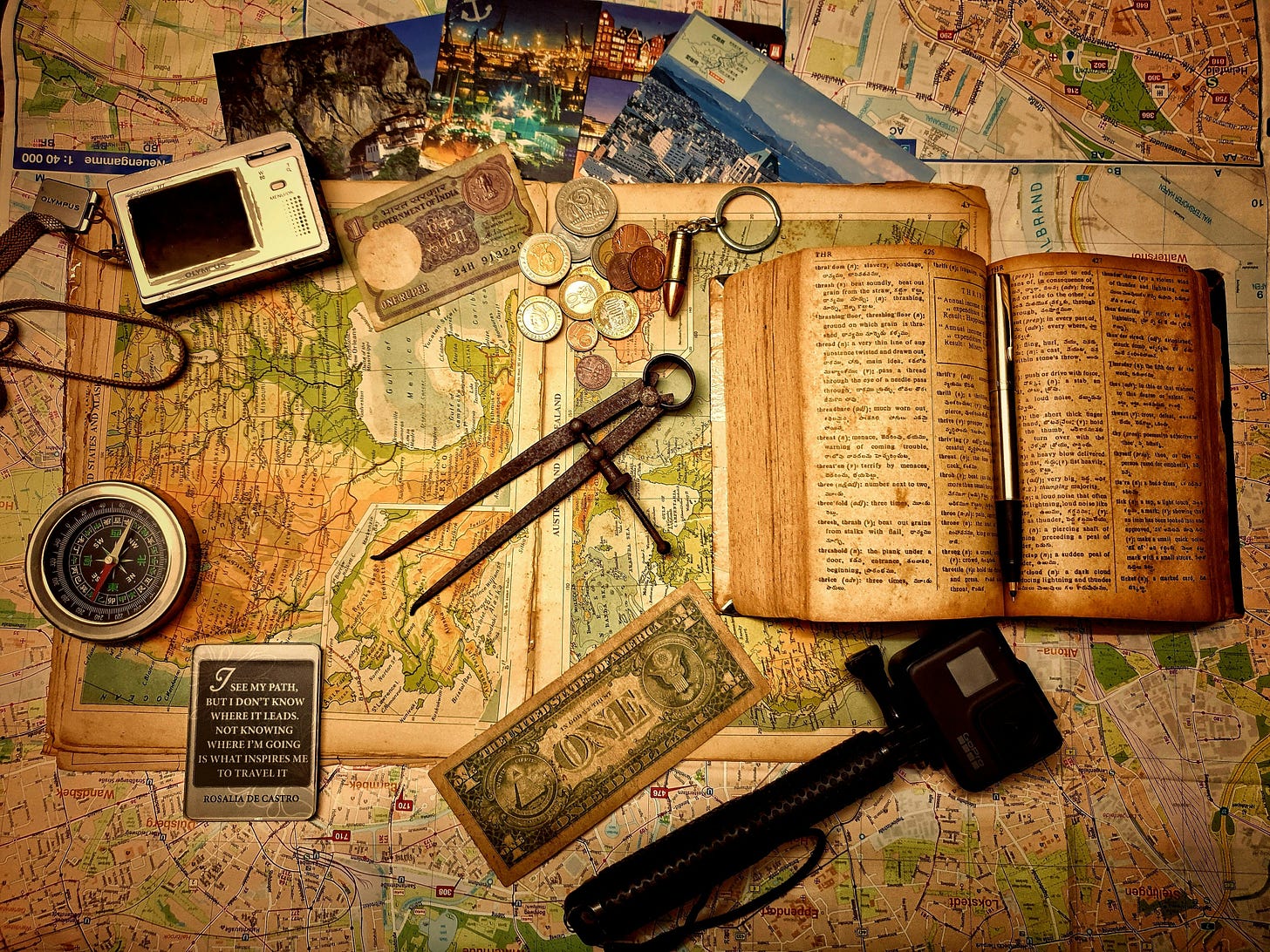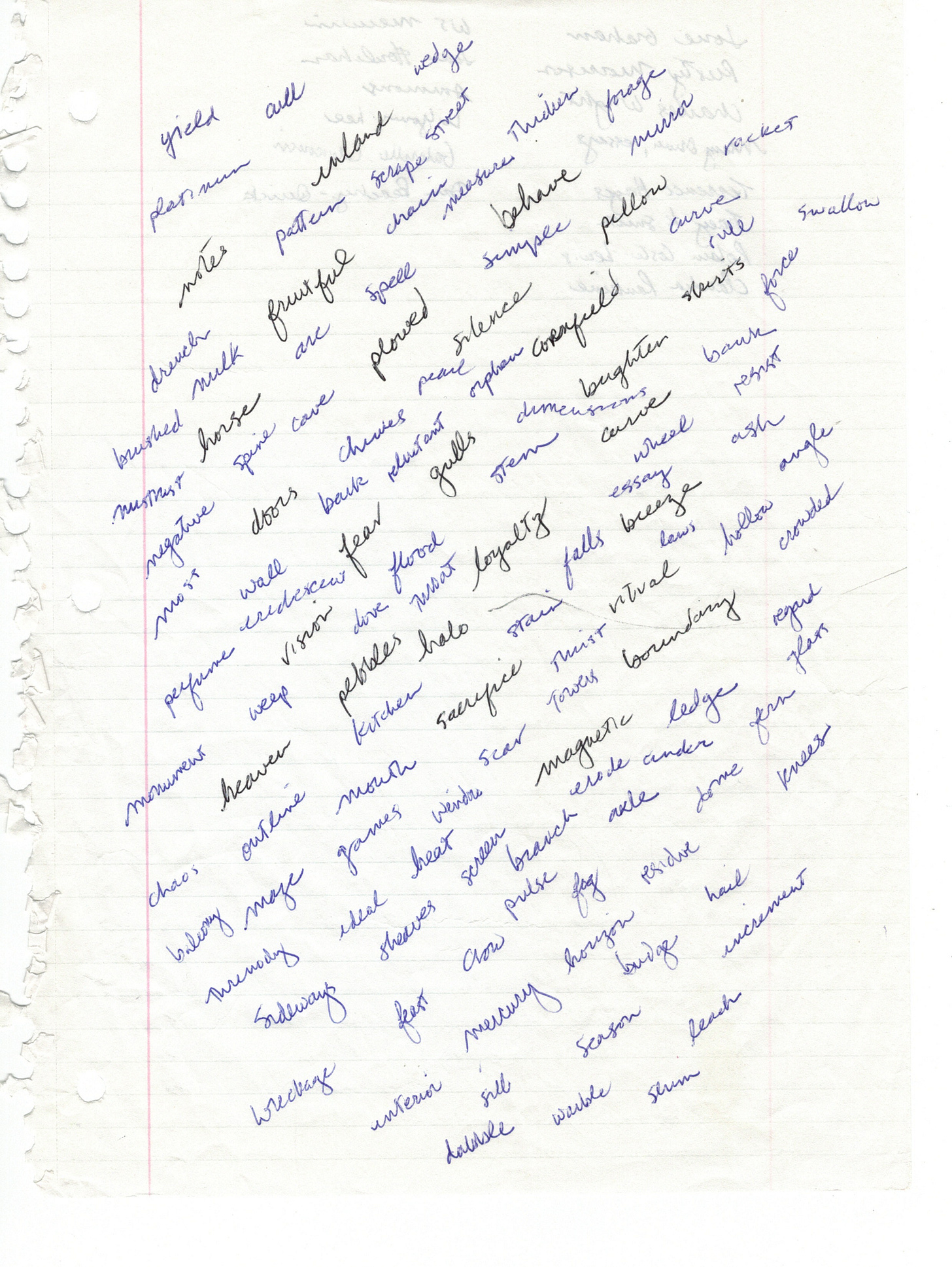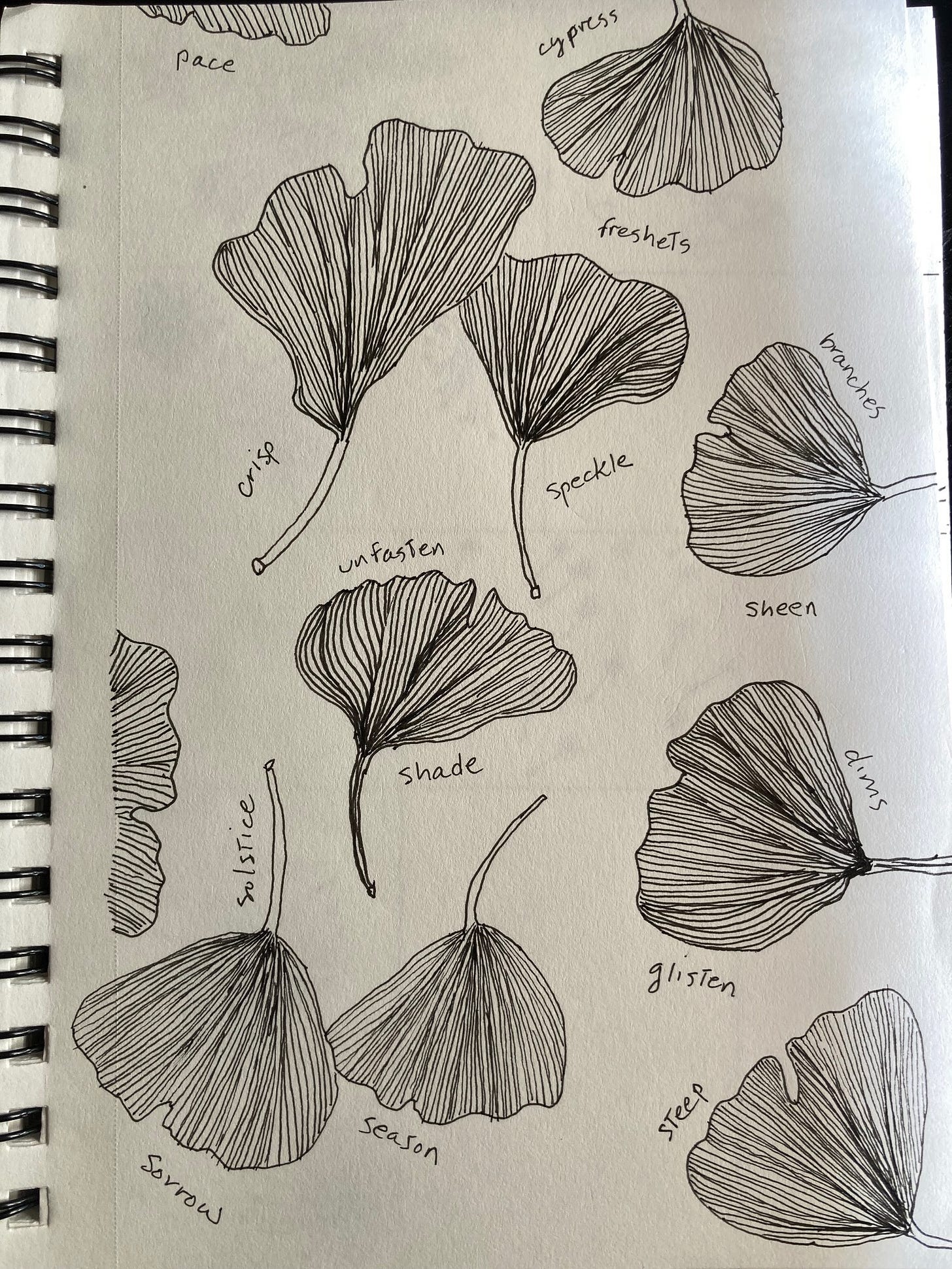From Word Pools to Wonder: How Other Artists Can Spark Your Creativity
On my favorite tool for inspiring my best creative work, the blessings of creative community, and the evocative power of maps

The last two weeks I’ve been having more pain, discomfort, and digestive issues again, and it’s been bringing my moods down with it. So, I’m experimenting with eliminating one of the supplements in my new healing protocol to see if that’s the main culprit.
These are rocky times in so many ways for so many people. If you’re going through something tough, my heart is with you. Perhaps today’s post, which continues the conversation about ways to spark your creative muse, will help. Making art is such a vital tool for well-being. I urge you to make time for it in your life.
A Creative Community to Nurture Your Art
If making time and space for art is a challenge, or if finding regular inspiration to keep you going is hard, or if you’re feeling isolated in your art and longing for a safe, welcoming community, I encourage you to check out my Brilliant Playmates creative community and membership program. (https://maximakahn.com/playmates/) I’m considering re-opening the doors in September, and I need to know if there’s enough interest. If you’re interested, please click on the waitlist button on the web page or email me to let me know. Letting me know in this way isn’t a commitment from you, just an expression of interest, so I can see if this is a direction for me to pursue at this time. I absolutely love being a part of, and a facilitator for, this remarkable community. So, I hope you’ll consider it.
“I have been part of Maxima Kahn‘s Brilliant Playmates group for its first six months…. Being part of a group of artists (of whatever kind – writers, painters, inventors, filmmakers, musicians, dancers, etc!) has such huge potential for us to support each other’s work and vision and adventure: accountability; sharing our dreams; having our dreams believed in; witnessing our fellow artists keeping going; sharing our difficulties; sharing our successes – all these things, for me, help me keep going.
If you’re looking for a supportive community, this just might be it! And, for myself – having been part of this for its first six months – I would so love to see it grow! Exponentially! I have found so much support for my art life through being part of a community of artists.”
One of My Best Tools for Sparking My Creative Fire
Last month, when I met with my poetry buddy on Zoom, we each brought a prompt to inspire us. Then, we wrote together for ten minutes to each prompt and shared what we wrote. I’m out of practice with writing poetry these last many months, so I wasn’t hopeful about the outcome. So, I was all the more surprised when the poem and prompt I brought sparked more vivid language and exciting ideas than I had felt coming from my pen for a while. What I wrote is just the draft of a poem that needs work, but it reminded me of the value of a practice I have long used in my writing and in other art forms as well, that I’d like to share with you.
The most reliable way for me to ignite my writing and get myself out of my verbal ruts is to read good, interesting writing by others. Then, I often, though not always, make a word pool out of the words the author used that catch my eye. This might be a small pool of five or six words or a large one with thirty. Choosing words that I don’t often use or simply ones that speak to me now stimulates welcome surprises in my writing.
I even recently used a collection of words that delighted me from a single poem by Sandra M. Gilbert as part of a visual art piece in my sketchbook.
I found this idea of reading good writing and using it as a prompt for one’s own writing echoed in Suleika Jaouad’s new book The Book of Alchemy, which is about the practice of journaling and how it can transform one’s life. I’ve just begun to read it. Each chapter includes an essay by a guest writer and a prompt to help you explore new dimensions in your journal writing. Jaouad discovered this approach when her own journal writing started to feel unsatisfying, rehashing the same complaints, patterns, and stories. This is a common problem I hear from students about their journal writing or Morning Pages (a practice in Julia Cameron’s The Artist’s Way).
To get out of her journaling slump, Jaouad says, “I sought out the voices of other writers who had famously kept journals, like Sylvia Plath, Susan Sontag, and Isabelle Eberhardt, before cracking open my own journal in the morning. To prompt myself—to push beyond myself—I would read a page or even just a paragraph, often selected at random.”
“The experience was kaleidoscopic,” she says. “A sentence, an idea, an anecdote could turn the barrel, refracting and reframing my perspective.” In reading the words of others before writing, she finds “A synapse fires that, moments earlier, was dead asleep.”
I find the same to be true for me. Reading interesting writing by others ignites my muse and moves her in surprising and often wonderful directions. This also works in other art forms—looking at or listening to the works of others gets my creative gears turning. I recently came across an essay of mine, in which a powerful awakening happened in me while listening to great music. Here’s an excerpt:
“Two days ago, I took out my violin to play, and lit a candle as I always do now, said my little prayer to be guided in what and how to play. Since I’d just been to the Celtic Festival and heard Alisdair Fraser give a workshop on the rhythmic aspect of Celtic music, I thought I’d try to incorporate some of what he was demonstrating. But it put me too much into my left brain. I wasn’t feeling it. So, I noodled around a bit. I tried playing all on one string, shifting positions. It was sort of interesting, especially the different timbres of the notes in the upper positions, but I was getting hung up on intonation, my old nemesis, trying to hit the notes just right, but missing them too often.
So, I put on Albert Ayler to try jamming along with him. I haven’t improvised with recordings for a long time. At first, I couldn’t groove with it because I was trying to play like Ayler, but I wasn’t hearing those notes. I tried turning it up loud to be more enveloped in it, but that didn’t work. Then, I tried turning it down so it was just background. I was no longer trying to play along with it; I was playing over it. And something happened, something profound. Something broke loose in me. I was playing all over the instrument, way up in the highest registers, flying at the notes and nailing them perfectly on pitch, notes I have no conscious idea how I knew where they were. I was playing wild chromatics, intervals, and sequences, and then bending the notes into microtones. And I was hearing the microtones, how they work and why I’ve been so drawn to them all my life, why that note a little flatter than flat can be so right, so satisfying. I was having a whole relationship to intonation that was entirely new for me—very precise and very free at the same time—and subconscious, coming from some incredibly deep well within me. And the music—it was my music—I knew it, I could hear it, how it was a strange and difficult, intense and very personal music. There it was, my sound, and it had shape and passion and integrity.”
If you’re feeling stumped or in a slump, I encourage you to try this approach. In our weekly Wonder Sparks below, I’ll share with you the exact prompt and words that I offered last month in the session with my poetry buddy. And I’ll offer some suggestions for how to play with this prompt in various art forms. I’ll also share the rough draft of a poem that came from it.



